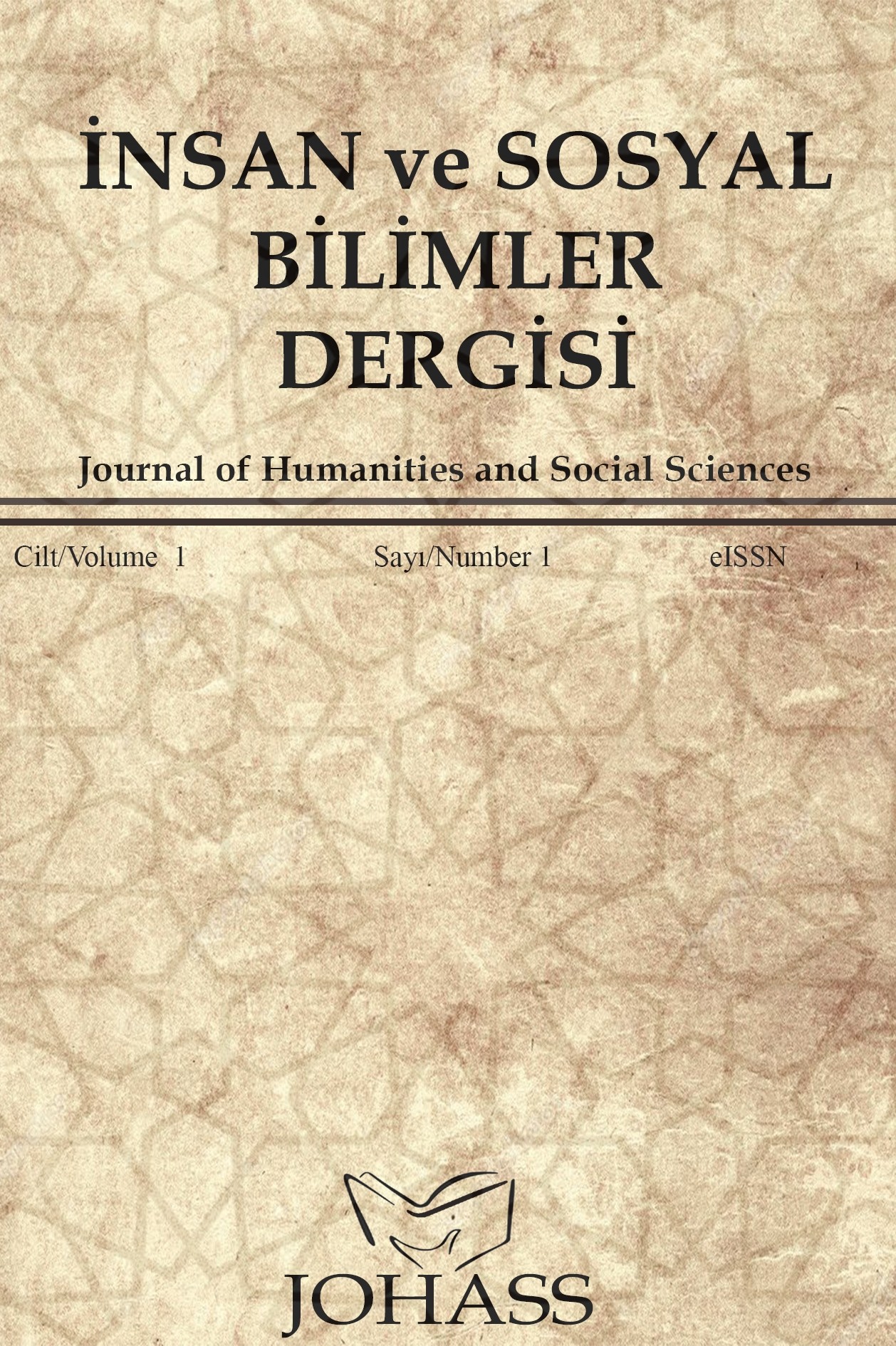Dil Yasalarını Yapısöküme Uğratmak: Arundhati Roy’un Küçük Şeylerin Tanrısı Romanında Dilsel Stratejiler
Arundhati Roy, Küçük Şeylerin Tanrısı, dil, madun, taklitçilik
Deconstructing the Language Laws: Arundhati Roy’s Linguistic Strategies in The God of Small Things
Arundhati Roy, The God of Small Things, language, subaltern, mimicry,
___
- Ashcroft, B., Griffiths, G. & Tiffin, H. (1989). The empire writes back: Theory and practice in postcolonial literatures. Routledge.
- Barsamiam, D. (2007, July 16). Interview with Arundhati Roy. The Progressive. https://progressive.org/magazine/interview-arundhati-roy-Barsamian/
- Bhabha, H. K. (1994). The location of culture. Routledge.
- Boehmer, E. (1995). Colonial and postcolonial literature. Oxford University Press.
- Çelikel, M. A. (2018). Arundhati Roy’s The God of Small Things: Reformulation of language and style in a postcolonial setting. Pamukkale Üniversitesi Sosyal Bilimler Enstitüsü Dergisi, (31), 267-274. https://doi.org/10.30794/pausbed.414845
- Cynthia, D. (1999). When language dances: The subversive power of Roy’s text in
- Dwivedi, O. P. (2010). The subaltern and the text: Reading Arundhati Roy’s The God of Small Things. Journal of Asia Pacific Studies, 1(2), 387-386.
- Fanon, F. (2008). Black skin, white masks. Grove press.
- Foucault, M. (1980). Power/Knowledge: Selected interviews and other writings. Pantheon.
- God of Small Things. Journal of Literature, Culture and Media Studies, 2(3), 142-151.
- Hopkins, L. (2013). “Infinnate Joy”: play, performance, and resistance in Arundhati Roy’s
- Kunhi, Z. M. (2010). Subversive language vs patriarchy and colonization: An analysis of The
- Lacan, J. (2002). Ecrits. (Bruce F., Trans.). W.W. Norton & Comp. (Original work published in 1966).
- Mulholland, J. (1991). The language of negotiation. Routledge.
- Nandi, M. (2010). Longing for the lost (m)other – Postcolonial ambivalences in Arundhati Roy’s The God of Small Things. Journal of Postcolonial Writing, 46(2), 175-186. https://doi.org/10.1080/17449851003707261
- Needham, A. D. (2005). ‘The small voice of history’ in Arundhati Roy’s The God of Small Things. Interventions, 7(3),369-391. https://doi.org/10.1080/13698010500268072
- Ngũgĩ, W. T. (2006). Decolonizing the mind. In M.H. Abraham (Ed.), The Norton Anthology of English Literature (8th ed., Vol. 2, pp. 2535-2539). NY: W.W. Norton & Company.
- Okuroğlu, Özün, Ş. & İren, A. (2020). Subalternity in Arundhati Roy’s The God of Small Things. Dokuz Eylül Üniversitesi Sosyal Bilimler Enstitüsü Dergisi, 22 (2), 421-434 https://doi.org/10.16953/deusosbil.542921
- Patchay, S. (2001). Pickled histories, bottled stories: Recuperative narratives in The God of Small Things. Journal of Literary Studies, 17(3-4), 145-160.
- Roy, A. (1997). The god of small things. Flamingo.
- Rushdie, S. (1992). Imaginary homelands. Granta.
- Sarup, M. (1992). Jacques Lacan. Harvester Wheatsheaf.
- Sharma, M. M. (2004). Translating subjects to selves in Arundhati Roy’s The God of Small Things. South Asian Review, 25(2), 124-134.
- Spivak, G. C. (2010). “Can the Subaltern Speak?”. In R. C. Morris (Ed.), Can the subaltern speak?: Reflections on the history of an idea. Colombia University. 236-91.
- The God of Small Things. In H.Snell& L.Hutchison (Eds), Children and cultural memory in texts of childhood (pp. 179-194). Routledge.
- The God of Small Things. In R.K. Dhawan (Ed), Arundhati Roy: The novelist extraordinary (pp. 365–76). Sangam Books.
- Tickell, A. (2003). The God of Small Things: Arundhati Roy’s postcolonial cosmopolitanism. The Journal of Commonwealth Literature, 38(1), 73-89.
- Torres, A. R. (2017). Roy’s Inglish in The God of Small Things: A Language for subversion, reconciliation and reassertion. ODISEA. Revista De Estudios Ingleses, (12). https://doi.org/10.25115/ODISEA.V0I12.292
- Vogt-William, C. (2003). “Language is the skin of my thought”: Language relations in ancient promises and The God of Small Things. In The politics of English as a world language (pp. 393-404). Brill.
- ISSN: 2667-4343
- Yayın Aralığı: Yılda 2 Sayı
- Başlangıç: 2018
- Yayıncı: Bilgiçağı Eğitim Danışmanlık ve Yayıncılık Sanayi Ticaret Limited Şirketi
Sınıf Öğretmenlerinin Sevgi Pedagojisine Yönelik Eğilimlerinin İncelenmesi
Ceylan ÜNAL AKBULUT, Melike CEYLAN, Şebnem UŞEN, Ece Merve YÜCEER NISHIDA, Emrah UÇAR, İbrahim DEMİR
Hemşirelerin İletişim Düzeylerini Etkileyen Faktörlerin İncelenmesi
José Saramago’nun Körlük Romanında Mekanın Duyusal ve Algısal Yönlerinin Analizi
Emine KÖSEOĞLU, Gizem Nur ÖNCÜ
Farah SAFAROVA, Yasin ŞEHİTOĞLU
Dijital Kapitalizm ve Emeğin Bireyselleşmesi: Uzaktan Çalışma Örneği
